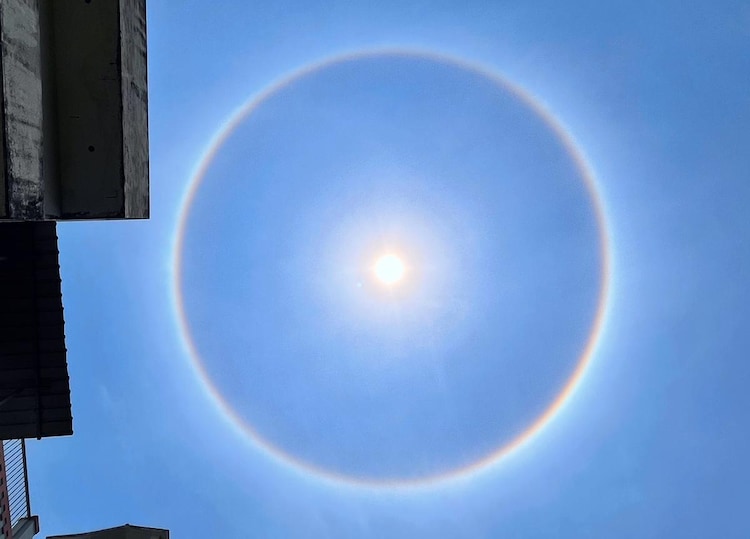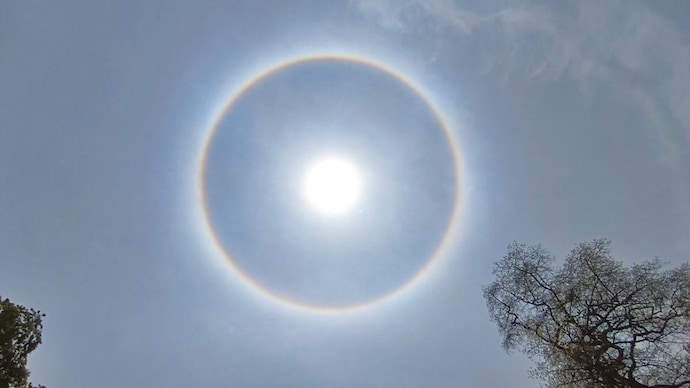
Rare Sun Halo seen in Prayagraj: What is the mysterious ring surrounding the Sun?
The rare astronomical event is the result of the delicate dance of light and optics coming together with the icy particles in the clouds.

In Short
- The mysterious ring was seen for a few hours in UP
- A sun halo is an optical phenomenon
- It appears as a bright ring around the sun
People in parts of Uttar Pradesh (UP) witnessed a rare celestial event as a mysterious ring enveloped the Sun in the skies. The multi-colored ring which appears like a rainbow circling the star in our solar system is called the sun halo.
The mysterious ring was seen for a few hours in several parts of the state as people captured and recorded the event. The rare event is the result of the delicate dance of light and optics coming together with the icy particles in the clouds and is the result of a process called dispersion of light. The sun halo is also called the 22-degree-ring halo.
WHAT IS SUN HALO?
A sun halo is an optical phenomenon that occurs when sunlight interacts with ice crystals in the atmosphere. It appears as a bright ring or halo around the sun, typically with a radius of approximately 22 degrees. The ring is formed by unique hexagonal ice crystals present in the atmosphere.
Also Read | Incredible image of solar eclipse reveals ghostly eruptions from Sun
These icy crystals are found in cirrus clouds, which are thin and wispy clouds. When sunlight enters these ice crystals, it is refracted, or bent, by the crystal's surfaces. This bending of light causes the sun's rays to separate into their component colors, creating a spectrum of colors that are visible as the halo.
Light undergoes two refractions as it passes through the ice crystals and the bending that occurs depends on the ice crystal's diameter. In a 22-degree halo, the kind seen in Prayagraj, light enters from one side of the ice crystal and exits through another, being refracted on both entry and exit.
Also Read | US govt grounds Musk's Starship for raining metal debris
The formation of sun halos is dependent on the size and orientation of the ice crystals, as well as the angle of the sun. The crystals must be oriented in a particular way to create the halo effect, with their flat surfaces parallel to the ground. This is why sun halos are relatively rare.
Solar halos have been previously seen in Bengaluru, Kerala, and other parts of the country given clear sky conditions.
Also Read | Why did Japan's Hakuto-R lander crash on the Moon? Last-min plunge holds clues
